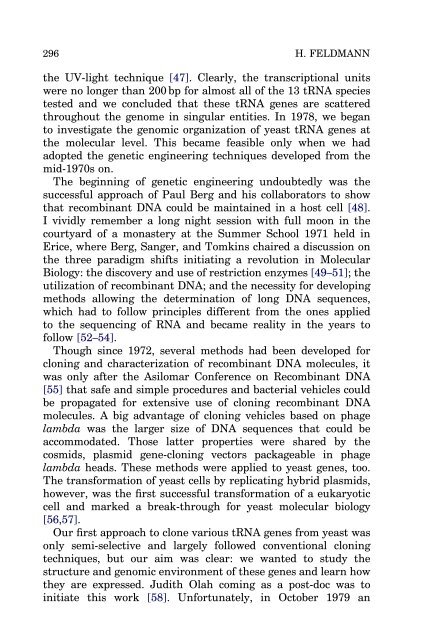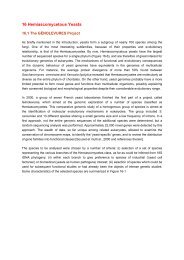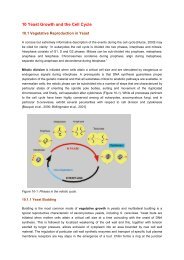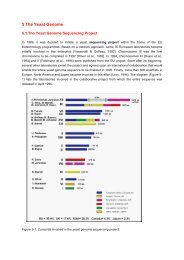A Life with Yeast Molecular Biology - Prof. Dr. Horst Feldmann
A Life with Yeast Molecular Biology - Prof. Dr. Horst Feldmann
A Life with Yeast Molecular Biology - Prof. Dr. Horst Feldmann
You also want an ePaper? Increase the reach of your titles
YUMPU automatically turns print PDFs into web optimized ePapers that Google loves.
296<br />
H. FELDMANN<br />
the UV-light technique [47]. Clearly, the transcriptional units<br />
were no longer than 200 bp for almost all of the 13 tRNA species<br />
tested and we concluded that these tRNA genes are scattered<br />
throughout the genome in singular entities. In 1978, we began<br />
to investigate the genomic organization of yeast tRNA genes at<br />
the molecular level. This became feasible only when we had<br />
adopted the genetic engineering techniques developed from the<br />
mid-1970s on.<br />
The beginning of genetic engineering undoubtedly was the<br />
successful approach of Paul Berg and his collaborators to show<br />
that recombinant DNA could be maintained in a host cell [48].<br />
I vividly remember a long night session <strong>with</strong> full moon in the<br />
courtyard of a monastery at the Summer School 1971 held in<br />
Erice, where Berg, Sanger, and Tomkins chaired a discussion on<br />
the three paradigm shifts initiating a revolution in <strong>Molecular</strong><br />
<strong>Biology</strong>: the discovery and use of restriction enzymes [49–51]; the<br />
utilization of recombinant DNA; and the necessity for developing<br />
methods allowing the determination of long DNA sequences,<br />
which had to follow principles different from the ones applied<br />
to the sequencing of RNA and became reality in the years to<br />
follow [52–54].<br />
Though since 1972, several methods had been developed for<br />
cloning and characterization of recombinant DNA molecules, it<br />
was only after the Asilomar Conference on Recombinant DNA<br />
[55] that safe and simple procedures and bacterial vehicles could<br />
be propagated for extensive use of cloning recombinant DNA<br />
molecules. A big advantage of cloning vehicles based on phage<br />
lambda was the larger size of DNA sequences that could be<br />
accommodated. Those latter properties were shared by the<br />
cosmids, plasmid gene-cloning vectors packageable in phage<br />
lambda heads. These methods were applied to yeast genes, too.<br />
The transformation of yeast cells by replicating hybrid plasmids,<br />
however, was the first successful transformation of a eukaryotic<br />
cell and marked a break-through for yeast molecular biology<br />
[56,57].<br />
Our first approach to clone various tRNA genes from yeast was<br />
only semi-selective and largely followed conventional cloning<br />
techniques, but our aim was clear: we wanted to study the<br />
structure and genomic environment of these genes and learn how<br />
they are expressed. Judith Olah coming as a post-doc was to<br />
initiate this work [58]. Unfortunately, in October 1979 an







